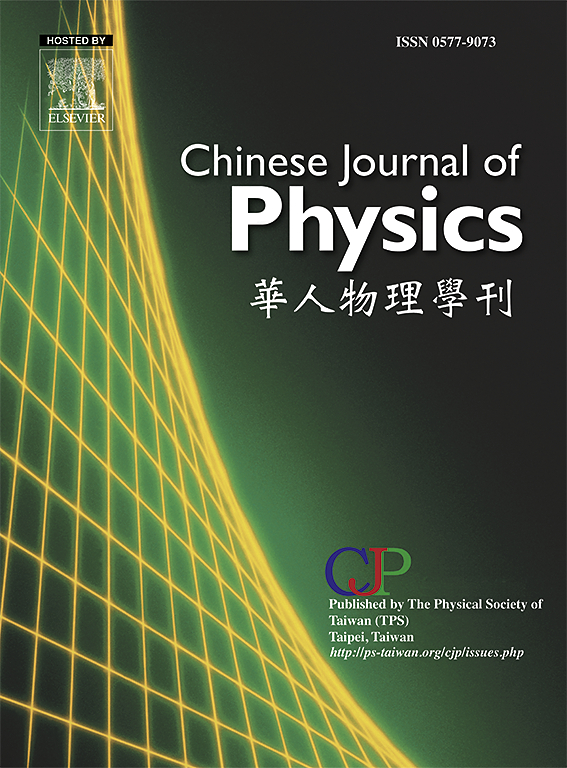具有同态结构可塑性的多路神经网络的同步性
IF 4.6
2区 物理与天体物理
Q1 PHYSICS, MULTIDISCIPLINARY
引用次数: 0
摘要
大脑具有多连接类型的分层结构,最能体现这种结构的是多层网络结构,即由两个或多个不同层组成的网络。为了进一步探讨生物神经网络中的同步现象,本文构建了一个由电突触耦合的具有同态结构可塑性的双层神经网络。此外,本研究还引入了同步因子和盆地稳定性,分别用于衡量网络同步性和量化同步状态的稳定性。研究结果表明,增加层内耦合强度、平均度和重布线频率可以使同步网络更高更稳定。此外,增加层间耦合强度和层间连接数也能提高双层网络的同步性和稳定性。特别是,层间耦合强度越大,子网络的同步性和稳定性就会比相应的孤立网络好得多,而另一个子网络的同步程度越高,就越能促进该子网络的同步性和稳定性。这项研究可为大脑同步相关生理功能的研究提供有益的指导。本文章由计算机程序翻译,如有差异,请以英文原文为准。

Synchronization in multiplex neural networks with homeostatic structural plasticity
The brain has a hierarchical structure with multiple connection types, which is best represented by a multiplex network structure, namely a network composed of two or more different layers. In order to further explore the synchronization phenomenon in biological neural networks, a bi-layer neural network with homeostatic structural plasticity coupled by electrical synapses is constructed in this paper. In addition, this study introduces the synchronization factor and basin stability to measure the network synchronization and quantify the stability of the synchronization state, respectively. The results show that increasing the intra-layer coupling strength, average degree and rewiring frequency can lead to a higher and more stable synchronization network. Moreover, increasing the inter-layer coupling strength and the number of inter-layer connections can improve the synchronization and stability in bi-layer networks. In particular, larger inter-layer coupling strength leads to the sub-network synchronization and stability much better than in the corresponding isolated network, and the higher the degree of synchronization of another sub-network can promote the synchronization and stability of the sub-network more. This study may provide useful guidance for the study of physiological functions related to brain synchronization.
求助全文
通过发布文献求助,成功后即可免费获取论文全文。
去求助
来源期刊

Chinese Journal of Physics
物理-物理:综合
CiteScore
8.50
自引率
10.00%
发文量
361
审稿时长
44 days
期刊介绍:
The Chinese Journal of Physics publishes important advances in various branches in physics, including statistical and biophysical physics, condensed matter physics, atomic/molecular physics, optics, particle physics and nuclear physics.
The editors welcome manuscripts on:
-General Physics: Statistical and Quantum Mechanics, etc.-
Gravitation and Astrophysics-
Elementary Particles and Fields-
Nuclear Physics-
Atomic, Molecular, and Optical Physics-
Quantum Information and Quantum Computation-
Fluid Dynamics, Nonlinear Dynamics, Chaos, and Complex Networks-
Plasma and Beam Physics-
Condensed Matter: Structure, etc.-
Condensed Matter: Electronic Properties, etc.-
Polymer, Soft Matter, Biological, and Interdisciplinary Physics.
CJP publishes regular research papers, feature articles and review papers.
 求助内容:
求助内容: 应助结果提醒方式:
应助结果提醒方式:


